Here’s your tried and tested guide to traditional food in Tenerife.
Recommended Reading: Unusual Things to do in Tenerife
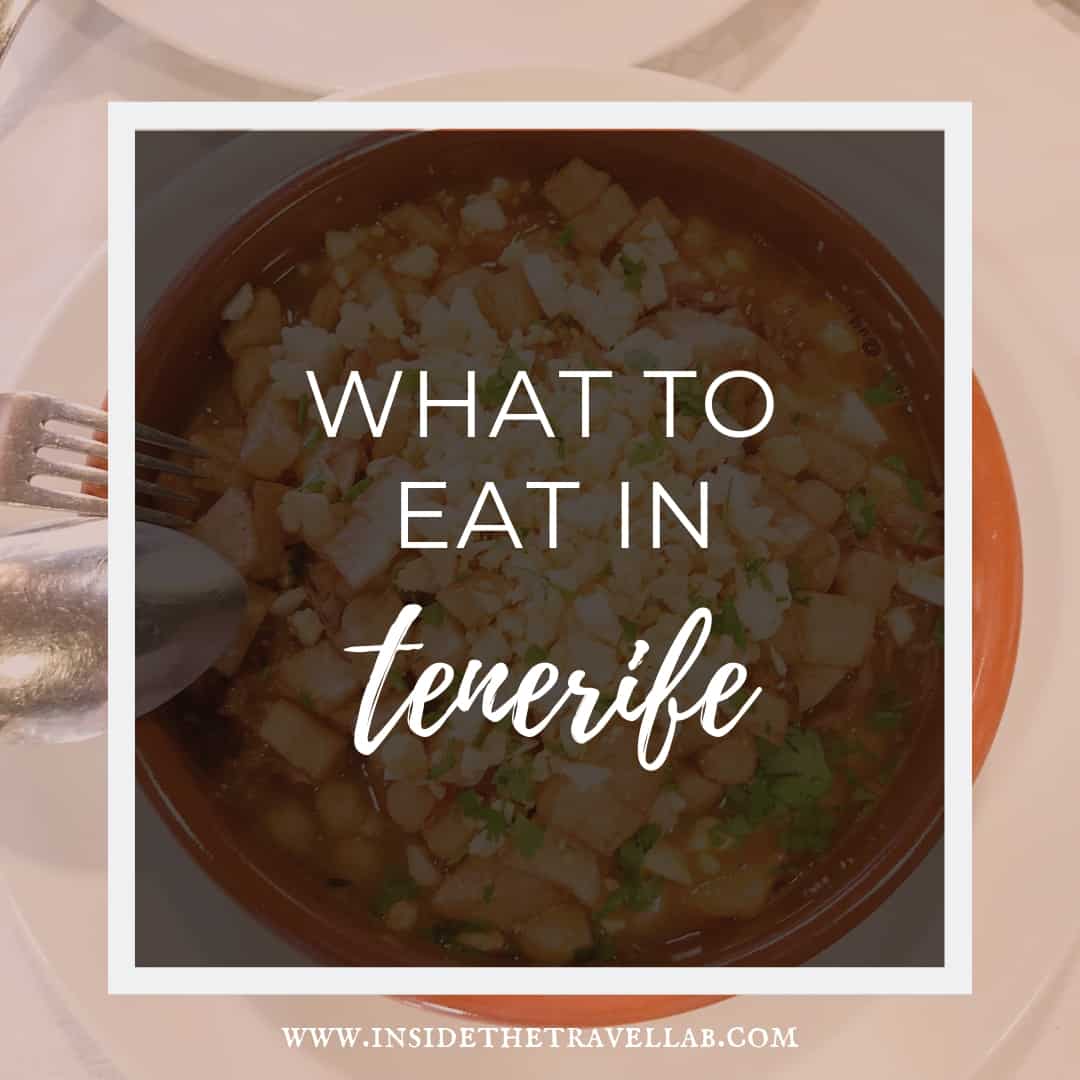
Tenerife Cuisine: What to Eat in Tenerife
The food in Tenerife blends together influences from nearby mainland Africa, the trade with Latin America, and, of course, the reach of Castilian Spain. You’ll find similarities across the Canary Islands but some island-specific recipe as well.
Perhaps the most famous dish in Tenerife is papas arrugadas, served with mojo rojo or mojo verde.
But the story of traditional Tenerife cuisine doesn’t start and end there. The best things to eat may include the mojo sauces but Canarian cuisine has more tricks up its sleeves, thanks to its rich volcanic soils.
So, after many visits to the island, here’s a guide to typical traditional Tenerife foods for you to try. Plus some travel tips and tricks on the best places to eat.
My Favourite: Papas Arrugadas with Mojo
My favourite, forever, will be papas arrugadas with green and red mojo.
Partly for the shimmering salt and garlic taste. Partly for the amusing sounding name (papas arrugadas means wrinkly potatoes.)
And mojo. Well, it’s pronounced “Mo-ho” but now if ever you’ve lost your mojo, you know exactly where to look.
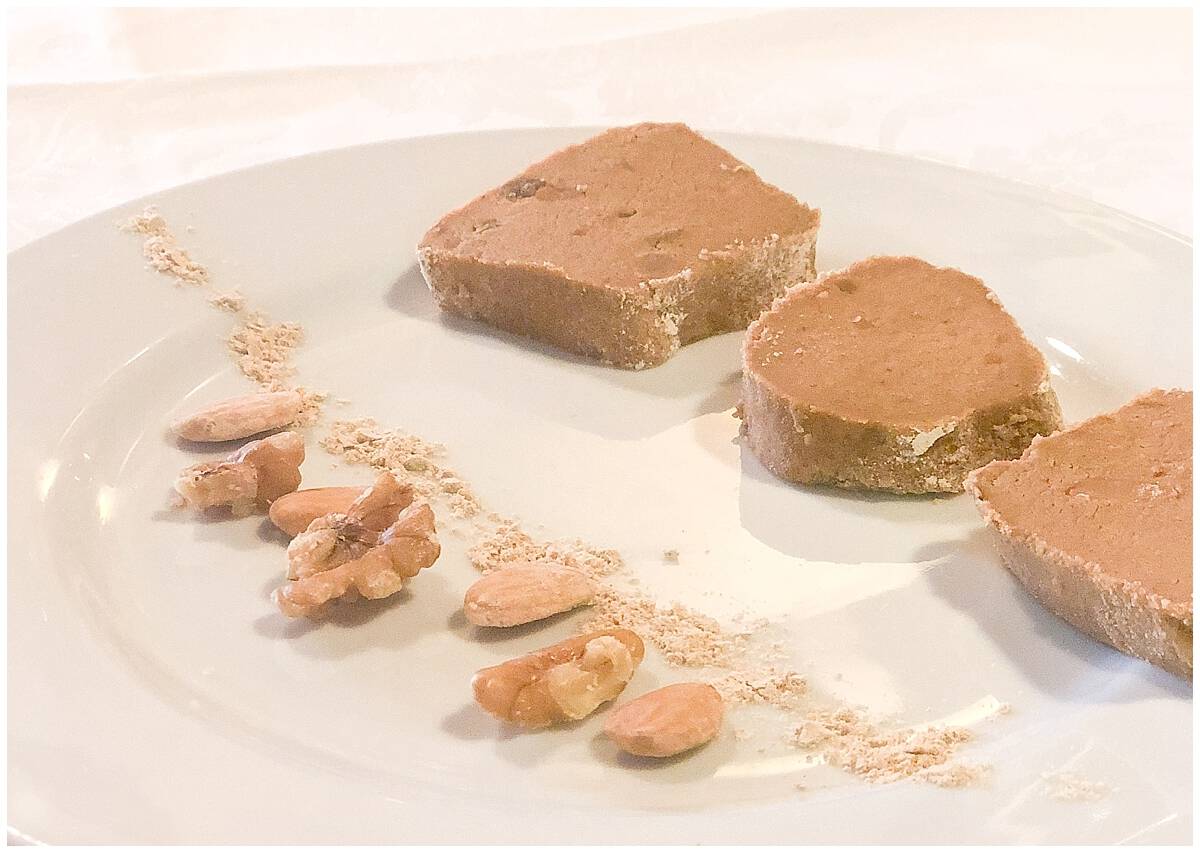
Gofio
Crumbly, beige-brown and looking a little like fudge, gofio has a more sensible nature. It’s made from toasted cereal or corn and tastes, well, like nothing much at all.
Its value (apart form keeping people alive during times of hardship) lies in allowing stronger flavours somewhere to set up stall.
And so you can have savoury gofio, mixed in with beans to counteract a rich tomato, garlic and pork dish.
Or, you can indulge in sweet gofio: blended with honey and almonds and crumbling with sweetness to taste.
Travel tip: Head to the Molino de Gofio La Maquina in Orotava and nibble on gofio while walking around this steep, white washed town with the intricate tea wood balconies.
Barraquito
Technically a drink rather than food, the calorie count and general sustenance and fortitude of a barraquito is enough to push it into the food category in my mind!
Rarely found in the other Canary Islands, a Barraquito consist of bunch of bad things that taste oh so good.
There’s coffee, of course for fuel.
Condensed milk for, er protein. (If you’re not sure what condensed milk is, it’s a sticky, sweet viscous product that’s – surprise! – been condensed from milk.)
Frothed milk for more protein.
Liquor for the fun of it. Typically, a barraquito uses Liquor 43, a Tenerife specialty, but if you’re at home right now and can’t get hold of that then I’m told a shot of Tia Maria will do the trick.
After that, the recipe varies. Some include lemon zest. Others sprinkle cinnamon on top. And, of course, it’s socially acceptable to order a virgin barraquito and keep the drink alcohol free.
I mean, it’s frowned upon. But it happens.
Travel tip: Stop at a café en route to UNESCO World Heritage Site Mount Teide and have a barraquito while overlooking the clouds.
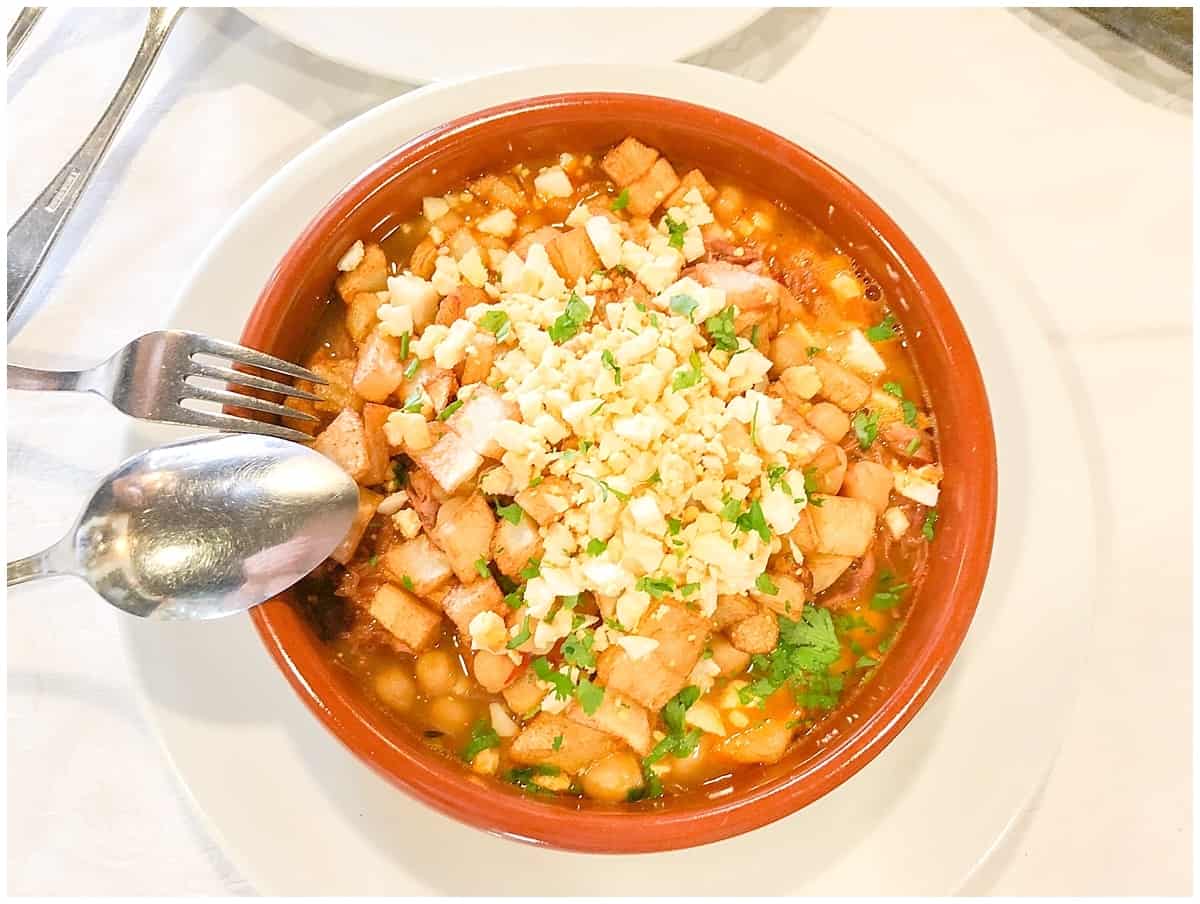
Ropa Vieja
Although also considered to be a national dish of Cuba, ropa vieja makes it onto the list of favourite traditional dishes of many an inhabitant of Tenerife.
And given the cultural exchange over the centuries, the link makes sense.
Pronounced ROPE-ah vee-AY-ha, the words may sound exotic but the translation isn’t so much. The words mean old clothes in Spanish and, like many a great recipe, its life began as a way to make the most out of some leftovers (or old clothes.)
The meat, typically pork but also others, comes shredded in a rich tomato, onion and garlic broth with vegetables thrown in for good measure. Chick peas are a stable here, and you can also find it served with chopped boiled egg on the top.
It’s a hearty dish on its own or with rice but often appears as a kind of “tapas” as well.
Travel tip: Try ropa vieja at the Restaurante Sabor Canario in Orotava, a restaurant just about contained within an higgledy-piggledy historic building full of wooden beams and flavour.
Puchero
Puchero (pronounced poo-CHAIR-oh!) like ropa vieja has cousins all over the Spanish speaking world. Unlike ropa vieja, the name’s not at all cryptic. Puchero means stewpot and, well, that’s a key part of the dish.
In Tenerife, the rich stew-like puchero may not make sense on the hot sandy beaches but go trekking in the north and all becomes clear.
Sometimes it feels as though the Canary Islands have thrown everything they have into this little dish, swirled it around with some passion and a lot of heart, taken a breath, stood back, and then thrown in some more.
There are chick peas, potatoes, whole chunks of sweetcorn and we’re just getting started. Long green beans and semi-sliced carrots, some onions and then it’s time for the meat.
Pork ribs, sausages, perhaps a loin of cow. Need some more vegetables? Throw some cabbage and huge chunked pumpkin in with beans and maybe some leeks.
Chop some bacon, don’t forget the olive oil and then I think you’re just about done.
Well, that and the side helping of gofio to mop it all up.
And after all that, you are probably are ready to hike a peak like this:
Travel tip: For the heartiest meal this side of Christmas, try the puchero at the Parador of Las Canadas del Teide near the summit of UNESCO World Heritage Site Teide Volcano. Book ahead to avoid feeling hungry and annoyed!
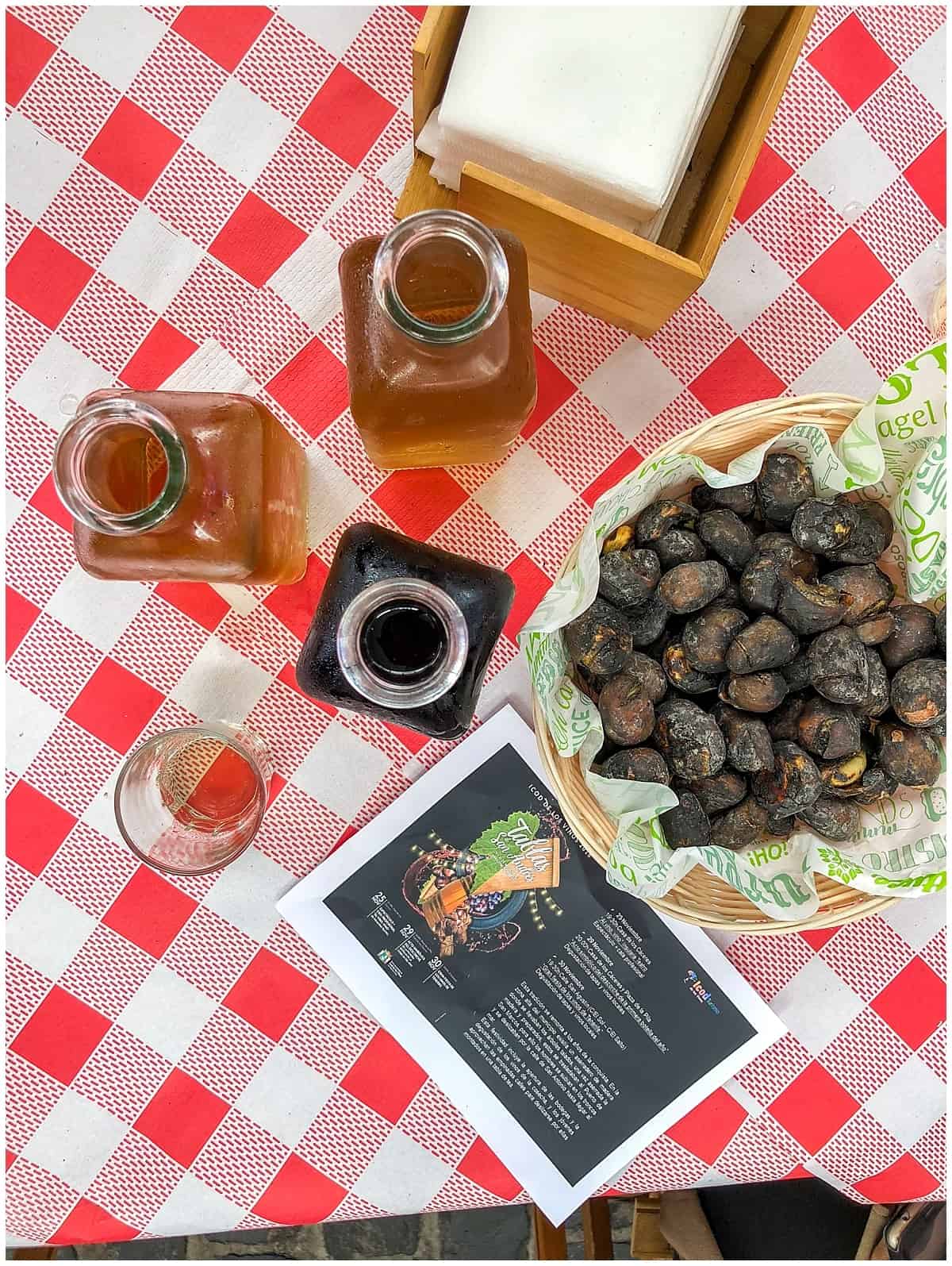
Roast Chestnuts
It’s hard to imagine during the balmy afternoon strolls at around twenty degrees, but to islanders, the run up to Christmas is considered cold.
Like many of the islands, Tenerife rustles up some roast chestnuts in the street to bring warmth to the poor shivering bodies (much as Londoners do, even though the climate’s around twenty degrees lower back there.)
Still, the steam, the hiss and the fizzles and the characteristically charred fingertips make for travel memories and hot, happy stomachs so I always give them a try.
Travel tip: Find them on the streets of the capital Santa Cruz de Tenerife or else at the Fiesta de St Andres in Icod de los Vinos at the end of November to celebrate the new wine.
Almogrote
Grotty by name, moreish by nature.
Almogrote nails its origins to the mast by hailing from La Gomera, a small island in the Canary Islands, rather than specifically Tenerife. But you’ll find it here too.
Easily mistaken for mojo from afar, almogrote is a thicker, creamier spread that may well appeal to more palates.
The paste is served as an appetiser alongside bread or with a main meal to go with the potatoes (or liven up the gofio) and the ingredients are as follows:
- Hard cheese
- Red peppers
- Olive oil
- Garlic
- Hidden ingredient magic dust only known to those in La Gomera
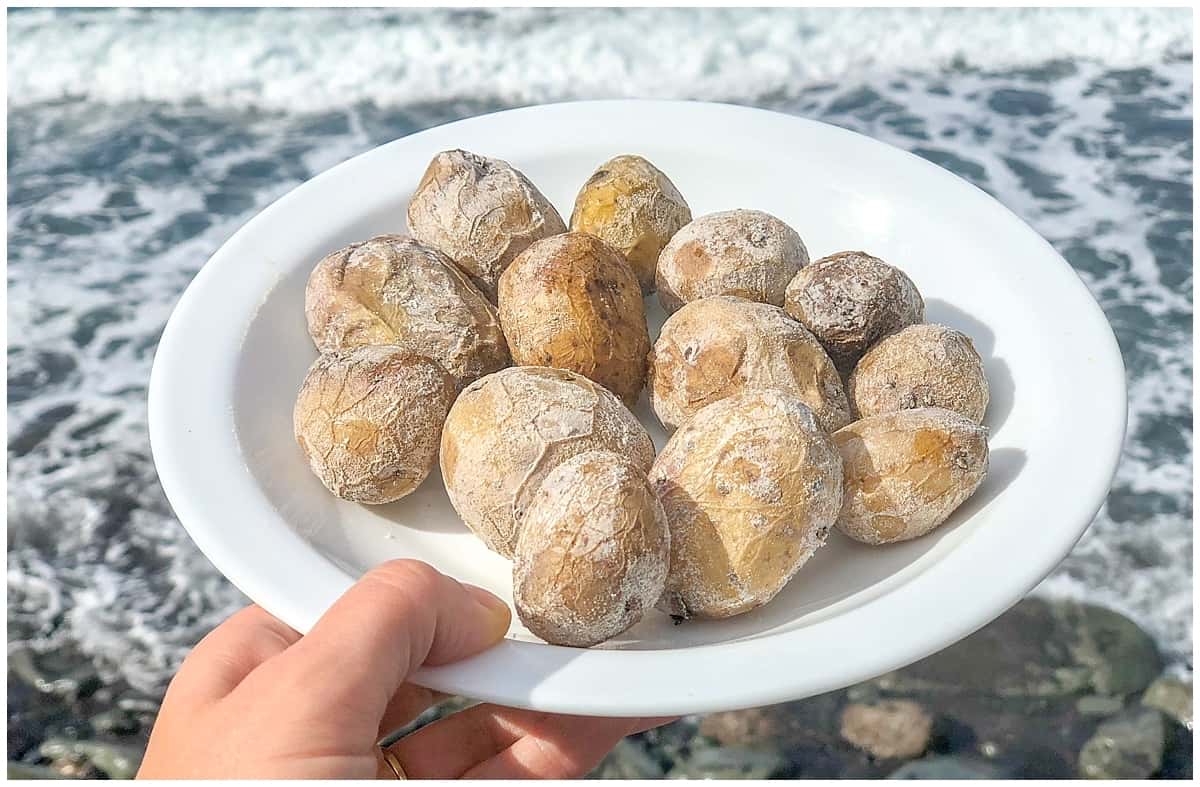
Papas Arrugadas
Papas arrugadas! To see them again is to meet an old friend! These rugged or wrinkled potatoes (pronounced arroo-GAH-das) arrive with a silver, salty sheen that makes them look, well, kinda baddass.
These silver foxes of Tenerife’s culinary world may not do wonders for your blood pressure but they do wonders for your tastebuds.
They’re served with just about everything but go particularly well with mojo (moho) – copious amounts of garlicky, spicy mojo.
Just a word of warning: papas arrugadas often arrive on a sharing platter. Given their popularity, you may need to move fast…
Travel tip: Learn how to make your own papas arrugadas here.
Tenerife Honey
Perhaps by now, you’ve realised that Tenerife naturally has black sand. But did you know it has a black bee?!
Sure, you can find honey all over the world, but you can only find Tenerife honey in Tenerife.
And, well, if that sounds obvious, this honey is special. It’s protected by the European Commission as one of 1100 products with the distinguished title Protected Designation of Origin (PDO).
Tenerife’s unique climate and volcanic soil results in flowers not found elsewhere. From there, it’s easy to see why the honey made from bees is likely to taste different as well.
Travel tip: Make the most of the Tenerife honey by soaking it into your gofio or dripping it onto morning toast. Traditional beekeeping is under threat at the moment in Tenerife, so you can feel as though your’e helping through sustainable tourism as well. Dee-licious.
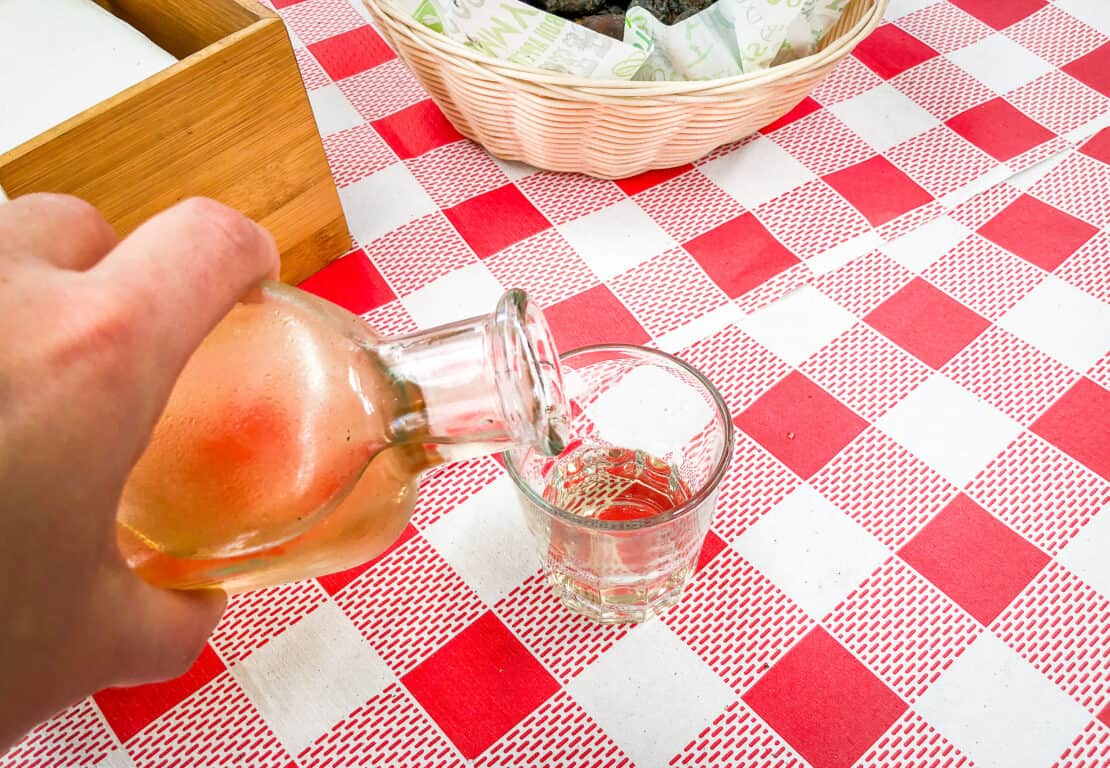
Tenerife Wine
Quick, just quickly, let me have a word about Tenerife wine even though we’re strictly supposed to be talking about Tenerife food.
You see, it’s part of the character here in Tenerife. Mass production isn’t possible, largely because you won’t find many rolling green fields.
Instead, vineyards hug the steep, volcanic terraces like molluscs in a storm and local people are proud of their wine cellars.
They’re so impressive that they have earned a mention in a guide to Tenerife food.
Red wines, white wines, you’ll find them all on the island of Tenerife. And you can find more detail over here.
They go well with chestnuts and goat cheese.
Travel tip: For real oenophiles, travel to Tenerife to coincide with St Andrew’s Wine Festival in Icod de los Vinos at the end of November where you can find live music and plenty of local food. Failing that, visit the wine museum instead.
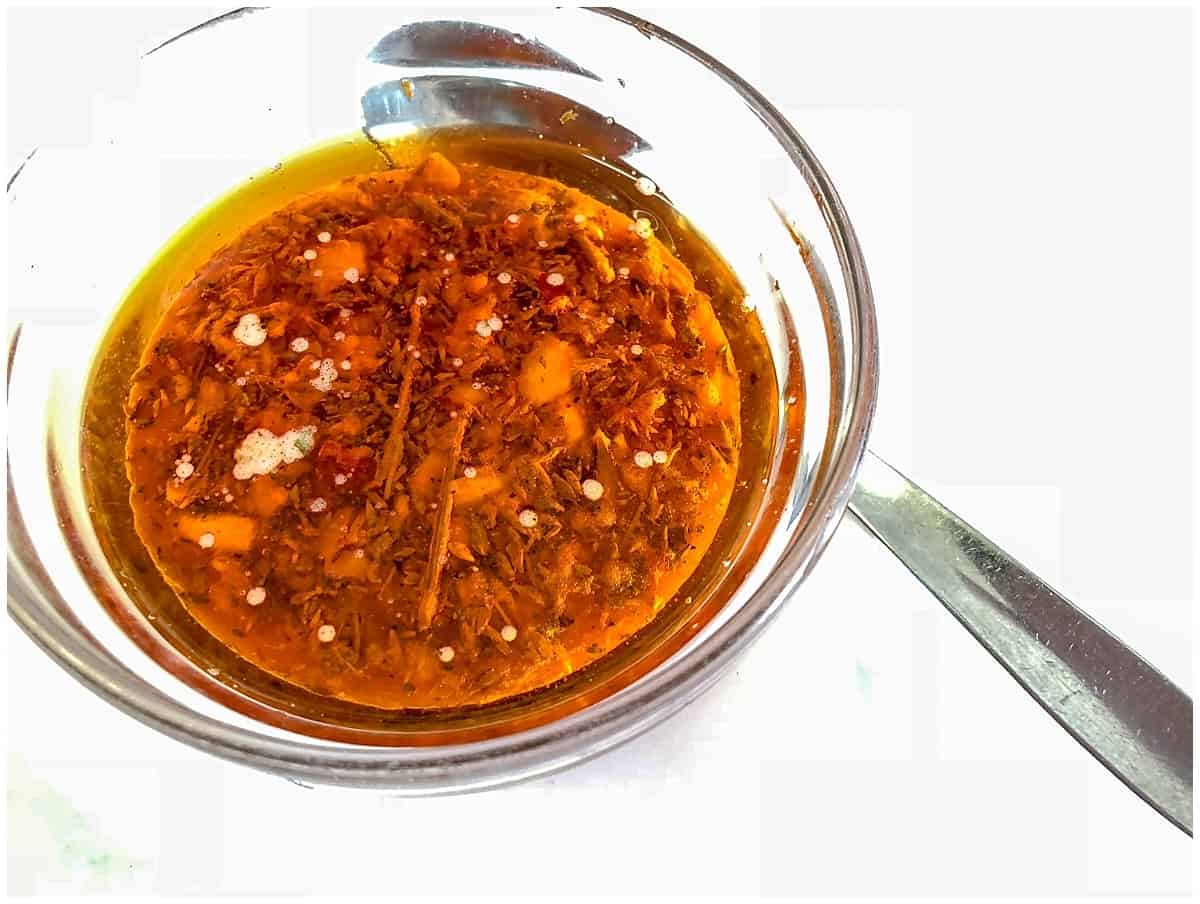
Mojo
And now we come to the real highlight of all the authentic food in Tenerife you can find.
Mojo.
Every casa, bodega, restaurant and bar has its own recipe, but that’s half the fun.
You can dine on mojo every day in Tenerife and still treat your tastebuds to the sizzle of something new.
Green mojo tends to be served more often with local fish, scooping up its greenery from coriander, parsley, or green pepper. Or sometimes a mix of all three.
Red mojo shimmies on the spicier side of life. Its core identity involves small red peppers (pimienta picona) from nearby La Palma or paprika and more typically partners up with meat.
Both enjoy hefty amounts of garlic and don’t be surprised to find almonds or saffron creeping into the mix.
Enjoying a meal with mojo is one of the best things you can do with your life.
Travel tip: Buy some jars at the supermarket, if you must, but make it a mission to try as many different varieties as you can all around the island. For me, wont’ you?
I found my favourite (to date) at Casa Africa on the coast in Taganana. More roughly chopped than most, just thinking about it now brings a smile to my stomach.
Sancocho Canario
xx
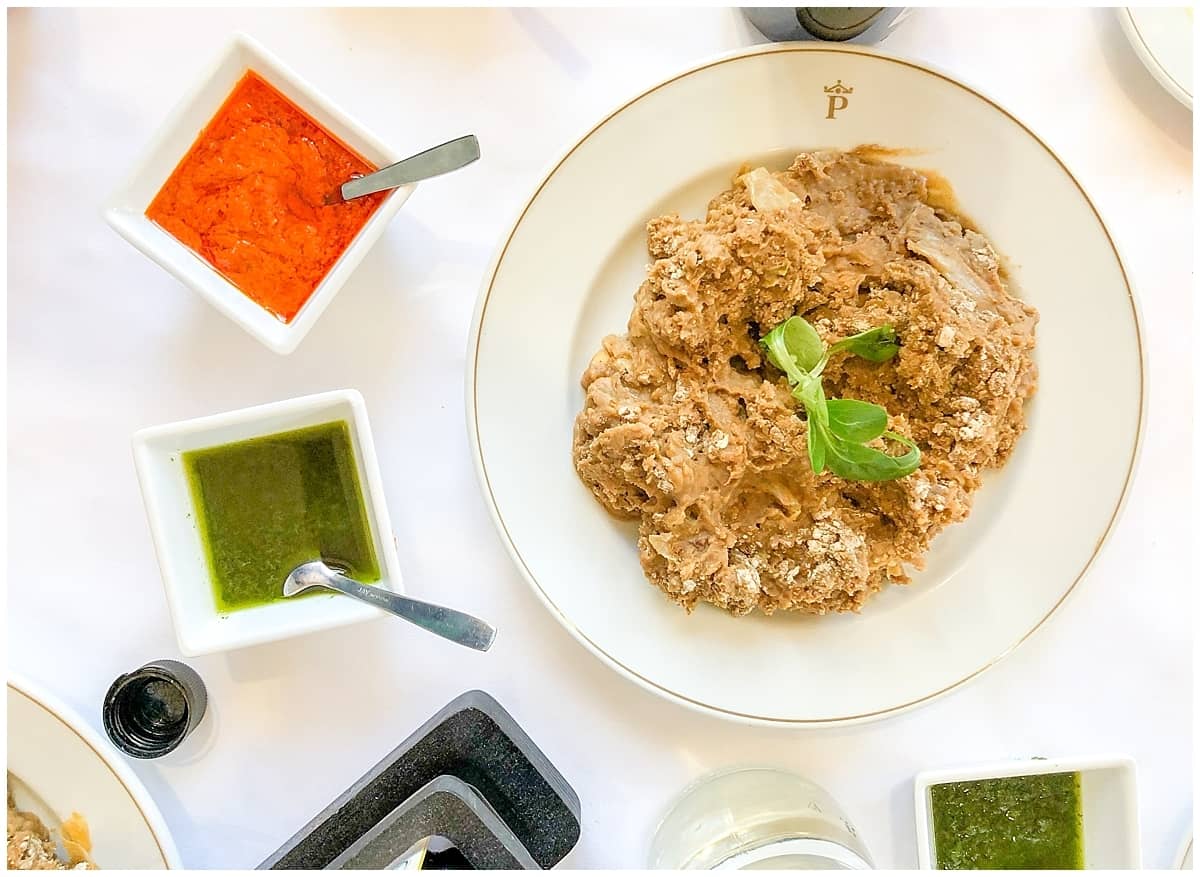
What is Typically Served at Mealtimes in Tenerife?
You don’t have to go far to find the strong red and green mojo flavours, but you may need to try harder to find the others.
Since you’re on an island, expect plenty of fresh fish as the main ingredient. Freshly caught and simply grilled, fish comes served with papas arrugadas and mojo or if you’re lucky almogrote.
In Puerto de la Cruz and Santa Cruz, you’ll find a wider variety of dishes and some of the best restaurants but don’t discount the smaller villages, roadside stops and family-run restaurants. Traditional Canarian food is high quality.
Travel tip: Visit El Mercado de Nuestra Señora de África, a market in Santa Cruz, to find a selection of traditional Tenerife cuisine all in one place. Look out for parrot fish, sea bream, rabbit stew and other creative dishes made from leftover meats.
More About Spanish Food and Drink
- Saltier and wrinklier than Mick Jagger: patatas arrugadas from the Canaries.
- The best churros in Madrid at the oldest chocolatería
- Why the best pintxos in San Sebastian is a story of rebellion
- The best tapas bars in Seville
- Gin, sin and the Xoriguer Distillery in Menorca
- What makes the olive harvest in Spain so different
- The seven Rioja bodegas you need on your wine-tasting list
- Eating at the world’s best restaurant in Catalunya
- The world’s best pizzeria lives in Spain (yes, Spain)
- The secret to pouring cider in Asturias in northern Spain
Disclosure – This trip was in partnership with Captivate and Visit Tenerife, though some aspects were self funded. All delicious food tastings and opinions remain my own! Yum!

The Papas Arrugadas with mojo sauce and the barraquito must be tried before you leave tenerife! Great blog, it makes me hungry! ;)
Oh, I miss mojo sauce so much! You’re right – they are must eats. Happy travels!